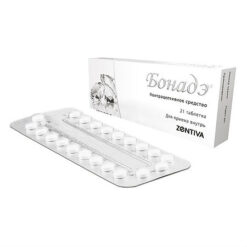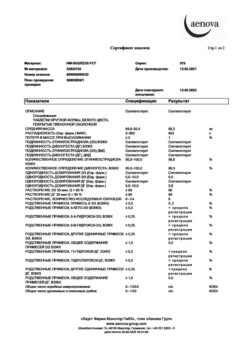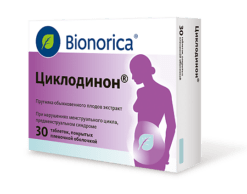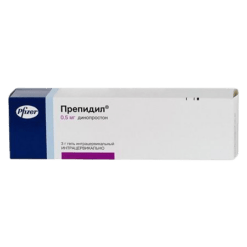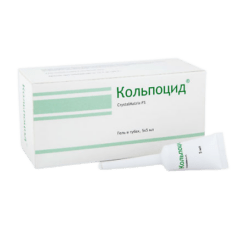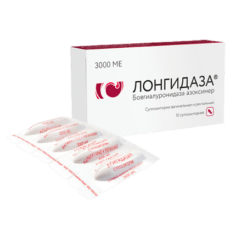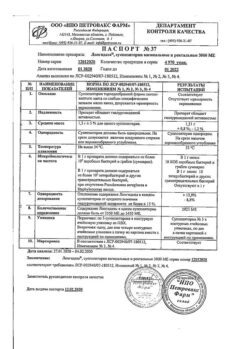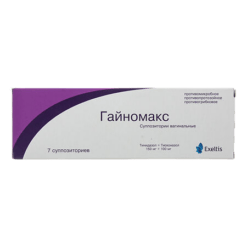No products in the cart.
Bonade, 2 mg+0.03 mg 63 pcs
€44.79 €37.32
EAN: 8594739213128
SKU: 231102
Categories: Contraceptive, Gynecology and Obstetrics, Hormonal, Medicine
Description
Pharmacotherapeutic group
Contraceptive combined (gestagen + estrogen).
The ATC code: G03 AA
Pharmacological Properties
Pharmacodynamics
BONADE® is a low-dose monophasic oral combined estrogen-gestogen contraceptive.
The contraceptive action of BONADE® is based on combined action of various factors, the most important of which is suppression of ovulation and increase in viscosity of cervical secretion.
The progestagenic component of BONADE®, dienogest, is a derivative of nortestosterone and has an anti-androgenic effect. Dienogest also has a favorable effect on the lipid profile, increasing the content of high-density lipoproteins.
In women taking combined oral contraceptives (OCs) the cycle becomes more regular, painful menstruation is less often observed, the intensity and duration of bleeding decreases.
Pharmacokinetics
Dienogest
Absorption. After oral administration, dienogest is rapidly and almost completely absorbed. Maximum plasma concentration (51 ng/ml) is reached 2.4±1.4 hours after a single dose. Bioavailability in combination with ethinylestradiol is about 96%.
Distribution. Dienogest is bound to serum albumin (90%) and does not bind to specific transport proteins – sex hormone-binding globulin (HSPG) and corticosteroid-binding globulin (CRB). Any effect on the processes of physiological transport of endogenous steroids is unlikely. Ethinylestradiol-induced increase in hGH concentration has no effect on dienogestin binding to serum proteins.
Metabolism. Dienogest is metabolized primarily by hydroxylation, but also by hydrogenation, conjugation and aromatization to form inactive metabolites. Total clearance after a single dose is 3.6 l/hour.
Elimation. The half-life of dienogest (T1/2) is 8.5-10.8 hours. A small amount of dienogest is excreted unchanged by the kidneys. Its metabolites are excreted by the kidneys and with bile in a ratio of 3:1. The elimination half-life of metabolites is 14.4 hours.
The equilibrium concentration. The pharmacokinetics of dienogest is not affected by the HSPH concentration. After a daily dose, plasma concentrations of the drug increase approximately 1-5-fold, and equilibrium is reached after approximately 4 daily doses.
Ethinylestradiol
Absorption. After oral administration, ethinylestradiol is quickly and completely absorbed. The maximum plasma concentration (67 ng/ml) is reached within 1.5-4 hours. During absorption and “first passage” through the liver, ethinylestradiol is metabolized, resulting in an average oral bioavailability of 44%.
Distribution. Ethinylestradiol is almost completely (98%), although non-specific, bound to albumin. Ethinylestradiol induces the synthesis of hGH. The recorded distribution volume of ethinylestradiol is 2.8-8.6 L/kg.
Metabolism. Ethinylestradiol undergoes presystemic conjugation both in the mucosa of the small intestine and in the liver. The main metabolic pathway is aromatic hydroxylation, followed by conjugation with glucuronic and/or sulfuric acids. The metabolic clearance rate from plasma is 2.3-7 ml/min/kg.
Evacuation. The concentration of ethinylestradiol in blood plasma decreases, and the decrease has a biphasic character; the first phrase is characterized by a half-life of about 1 hour, the second – 10-20 hours. It is not excreted unchanged. Metabolites of ethinylestradiol are excreted by the kidneys and liver in a ratio of 4:6; with a half-life of about 24 hours.
The equilibrium concentration. The equilibrium concentration is reached during the second half of the treatment cycle, when the drug levels in serum become twice as high as an individual dose.
Indications
Indications
Contraception (prevention of unwanted pregnancy).
The treatment of mild to moderate acne in women who need contraception when other treatments are ineffective (topical treatment or systemic antibiotics).
Active ingredient
Active ingredient
Composition
Composition
Film-coated tablets.
Each film-coated tablet contains:
Active substances:
dienogest – 2 mg,
ethinyl estradiol – 0.03 mg.
Auxiliary substances:
Lactose monohydrate – 57.17 mg,
Corn starch – 12 mg,
povidone 30LP – 3 mg,
sodium starch glycolate – 5 mg,
magnesium stearate – 0.8 mg.
Film Coating:
Aquapolish white 014.17 MS (hypromellose – 48 %, hydroxypropyl cellulose – 12 %, talc – 20 %, cotton seed oil hydrogenated – 5 %, titanium dioxide – 15 %) – 9 mg.
How to take, the dosage
How to take, the dosage
When and how to take BONADE®
BONADE® is taken orally one tablet a day without chewing and with a little water at the same time every day. Tablets are taken for 21 days without interruption according to the scheme shown on the blister. Each blister contains 21 tablets. Each tablet is marked with the day of the week on which it is to be taken. The pills are not taken for the next 7 days. During this period, menstrual bleeding (bleeding “cancellation”) should begin. Usually it starts 2-3 days after taking the last tablet of BONADE®.
After a 7-day interval, on the 8th day, you may start taking pills from a new pack (if the pack contains 21 pills) or a blister (if the pack contains 63 pills), even if bleeding has not yet stopped. This means that you will always start a new pack (blister) on the same day of the week and that each month’s bleeding “cancellation” will occur on about the same day of the month.
How to start BONADE®
If you have not taken any hormonal contraceptive in the previous month.
The use of BONADE® starts on the first day of the natural menstrual cycle (i.e. the first day of bleeding). Take the tablet marked with the corresponding day of the week. For example, if menstruation begins on Friday, take the pill marked with the letters indicating Friday. Then, continue taking the pills on the following days in the prescribed order. It is also acceptable to start taking from the 2nd to the 5th day of the cycle, but in this case it is recommended to use an additional barrier method of contraception (condom) during the first 7 days of taking the pills from the first package (blister).
When switching from other OCs, contraceptive vaginal ring or contraceptive patch.
You can start taking BONADE® the day after taking the last tablet from the previous OC pack (i.e. without interruption of the dose). If the previous package also contained inactive pills (without the active ingredient), you can start BONADE® the day after the last active pill. It is also possible to start using later, but in no case later than the next day, after the usual interruption in use (a break of 7 days for preparations containing 21 tablets) or after taking the last inactive tablet (for preparations containing 28 tablets in a pack).
If a contraceptive patch or contraceptive vaginal ring is used, BONADE® should be started on the day it is removed, but no later than the day a new ring or patch is to be inserted.
When switching from a progestagen-only oral contraceptive (“mini-pills”).
You can stop the mini-pill any day and start BONADE® the next day at the same time. During the first 7 days of taking the pills, you must also use an additional barrier method of contraception.
If you switch from a progestagen-releasing injectable contraceptive, implant, or intrauterine device (IUD).
Start BONADE® on the day the next injection is due or on the day the implant or IUD is removed. During the first 7 days of taking the pills, you should also use an additional barrier method of contraception.
Postpartum
. Immediately after giving birth, your doctor may recommend that you wait until after your first normal menstrual cycle before starting BONADE®. Occasionally, it may be possible to begin taking the product earlier, on your doctor’s recommendation.
After a spontaneous miscarriage or abortion in the first trimester of pregnancy.
Consult with your doctor. It is usually recommended to start taking the medicine immediately.
If you miss taking BONADE®
If you are less than 12 hours late taking your next pill, the contraceptive effect of BONADE® is maintained. Take the pill as soon as you remember it. Take the next pill at the usual time.
– If pills are missed for more than 12 hours, contraceptive protection may be reduced. The more consecutive pills you miss, and the closer that miss is to the beginning or the end of the pill, the greater the risk of pregnancy.
The following rules can guide you in this regard:
Missing more than one pill from the package (blister).
Consult with your doctor.
Missed one tablet in 1st week of treatment.
Take the missed pill as soon as you can remember (even if it means taking two pills at once). Take the next pill at the usual time. Additionally, use a barrier method of contraception for the next 7 days. If you had intercourse during the week before skipping the pill, consider the possibility of pregnancy. Consult your doctor immediately.
Missed one pill in the 2nd week of taking the drug.
Take the missed pill as soon as you can remember (even if it means taking two pills at once). Take the next pill at the usual time. If you took the pill correctly in the 7 days preceding the first missed pill, contraceptive effect of BONADE® preserved, and you do not need to use additional contraceptive measures. Otherwise, and if you miss two or more pills, you need to use additional barrier contraceptive methods for 7 days.
Missing one pill in week 3.
If all pills were taken correctly in the 7 days preceding the first missed pill, no additional contraceptive methods are necessary if you stick to either of the following two options:
Take the missed pill as soon as you can remember (even if that means taking two pills at once). Take the next pill at the usual time. Start the next package (blister) immediately after you finish taking the pills from the current package (blister), so there is no break between packages (blisters). Bleeding “cancellation” is unlikely until the pills from the second package (blister) are finished, but “smeary” discharge or “breakthrough” uterine bleeding may occur during the days of taking the drug.
Stop the pills in the current dose (blister), take a break for 7 days or less (including the day you missed the pill), and then start the pills in a new dose (blister).
If you do not have the expected menstrual bleeding after taking a break in your pills, you may be pregnant. Talk to your doctor before you start a new pack (blister) of pills.
In situations where you are advised to discontinue BONADE® or where its reliability may be reduced, you should refrain from sexual intercourse or use non-hormonal contraceptive methods (such as condoms or other barrier methods). Rhythmic or temperature methods should not be used. These methods can be unreliable because taking OCs causes changes in basal temperature and cervical mucus.
In case of discontinuation of BONADE®
You can stop taking BONADE® at any time. If you stop taking BONADE® because you want to get pregnant, it is usually recommended that you wait until your first normal period and then try to get pregnant. With this method, it is easier to set a date of delivery.
Recommendations in case of gastrointestinal disorders
In case of vomiting or diarrhea, the active ingredients in BONADE® may not be fully absorbed. If vomiting continues 3-4 hours after taking the contraceptive pill, the result may be the same as if you skipped taking the pill. Proceed as recommended in case of skipping the pill. Consult your doctor if you have severe diarrhea.
Delay the onset of menstrual bleeding
You can delay the onset of menstrual bleeding by starting the pills in the next pack (if the pack contains 21 pills) or blister (if the pack contains 63 pills) immediately after your current pack (blister) ends. You can take the tablets as long as you like, or until the tablets in the package (blister) run out. If you want bleeding “cancellation” to start, just stop taking the pills. During taking BONADE® tablets from a new package (blister) you may have copious or “smeared” bloody discharge. Start taking the pills from the next package (blister) after the usual 7-day interval.
Changing the day menstrual bleeding starts
If you take the pill exactly as recommended, menstrual bleeding occurs on about the same days every 4 weeks. If you want to change these days, simply shorten (but by no means extend) the next interval without taking the pill. For example, if your bleeding starts on Fridays, and you want it to start on Tuesdays (3 days earlier), then you should start taking the pills from the new package (blister) 3 days earlier than usual. If the interval without taking the pills is too short, you may not bleed at all during this interval. However, heavy or “smeared” bleeding may occur while taking the pills from the new package (blister).
Interaction
Interaction
Some medications may decrease the effectiveness of BONADE®. These include drugs used to treat:
– epilepsy (e.g., primidone, phenytoin, barbiturates, carbamazepine, oxcarbazepine, topiramate, felbamate) – barrier methods of contraception must be used throughout the therapy cycle and for another 28 days after therapy ends;
Tuberculosis (e.g., rifampicin, rifabutin) and HIV infection (e.g., ritonavir, nevirapine) – require use of barrier methods of contraception throughout the therapy cycle and for another 28 days after therapy ends;
– Antibiotics for the treatment of some other infectious diseases (e.g., penicillin, tetracyclines, griseofulvin) – the use of barrier methods of contraception for the entire cycle of therapy and for another 7 days after its completion;
– St. John’s wort-based drugs (used to treat depressed conditions) – the use of barrier methods of contraception for the entire cycle of therapy and for another 28 days after its completion.
The drug BONADE® may affect the metabolism of other drugs, resulting in an increase (e.g., cyclosporine) or decrease (e.g., lamotrigine) in their plasma and tissue concentrations.
Some medications may affect the metabolism of the active ingredients of BONADE®. These include:
– antifungal drugs (e.g., ketoconazole);
– H2-blockers for the treatment of gastric and duodenal ulcers (e.g., cimetidine);
– certain drugs to treat arterial hypertension (e.g., verapamil, diltiazem);
– antibiotics to treat bacterial infections (macrolides, such as erythromycin);
– antidepressants;
grapefruit juice.
Always tell your doctor what medications (including herbal medicines) you are taking or have recently taken. Also tell any doctor, including your dentist, who prescribes other medications, and the pharmacist who sells you medication that you are taking BONADE®.
In some cases, your doctor may recommend that you additionally use a barrier method of contraception (condom).
Special Instructions
Special Instructions
If any of the following conditions or risk factors are present, the potential risks and expected benefits of the drug should be carefully evaluated and discussed with the woman before she decides to start taking it. If there is an increase in symptoms of an existing disease, an exacerbation of a disease, or if the first signs of these conditions or risk factors occur with this medication, it is necessary to consult a physician, who may decide whether to withdraw the medication.
Thrombosis
Thrombosis is the formation of a blood clot (thrombus), which can block a blood vessel. When the clot breaks off, it causes a thromboembolism. Sometimes thrombosis develops in the deep veins of the lower extremities (deep vein thrombosis), heart vessels (myocardial infarction), the brain (stroke), and very rarely in the vessels of other organs. The risk of deep vein thrombosis in women taking OCs is higher than in those not taking them, but not as high as during pregnancy.
The results of epidemiological studies suggest an association between OC use and an increased risk of thrombosis and thromboembolic diseases such as myocardial infarction, stroke, deep vein thrombosis, and pulmonary artery embolism when taking OC. These complications are rare.
The risk of venous thromboembolism (VTE) is highest in the first year of taking these drugs, mostly during the first 3 months. An increased risk is present after initial use of OCs or when renewing use of the same or different OCs (after a break of 4 weeks or more between doses).
The overall risk of VTE in patients taking low-dose OCs (< 50 mcg ethinylestradiol) is two to three times higher than in nonpregnant patients not taking OCs, yet this risk remains lower compared to the risk of VTE in pregnancy and labor.
In very rare cases, venous or arterial thromboembolism can be fatal.
VTE, manifesting as deep vein thrombosis and/or pulmonary embolism, can occur with any OC.
It is extremely rare for thrombosis in other blood vessels, such as veins and arteries in the liver, mesentery, kidneys, brain, or retina, to occur with OC use.
The symptoms of deep vein thrombosis (DVT) include the following: unilateral swelling of the lower extremity or along a vein in the lower extremity, pain or discomfort in the lower extremity only when upright or walking, localized temperature rise in the affected lower extremity, redness or discoloration of the skin on the lower extremity.
The symptoms of pulmonary artery thromboembolism (TELA) are: difficulty or rapid breathing; sudden cough, including with hemoptysis; sharp pain in the chest, which may increase with deep breaths; anxiety; severe dizziness; and rapid or irregular heartbeat. Some of these symptoms (e.g., shortness of breath, cough) are nonspecific and can be misinterpreted – as signs of other more common and less severe conditions/diseases (e.g., respiratory infection).
In the event that women taking OCs experience the above symptoms, they should consult their doctor immediately.
The risk of VTE is increased:
with age;
with smoking (with heavy smoking and with increasing age, the risk is further increased, especially in women over 35. Women over 35 years of age should be strongly advised to stop smoking if they want to take BONADE®);
with a strong family history (i.e., a history of venous thromboembolism at a relatively young age in parents or close relatives). If a hereditary predisposition is suspected, a woman should consult a specialist before deciding on any hormonal contraception;
If prolonged immobilization, major surgery, any surgery on the lower extremities or extensive trauma. In these situations, use should be discontinued (in the case of elective surgery at least 4 weeks in advance), and should not be resumed until two weeks after full restoration of motor activity. If BONADE® has not been discontinued beforehand, antithrombotic therapy should be considered;
air travel of more than 4 hours;
in obesity (body mass index over 30 kg/m2).
The risk of arterial thromboembolic complications or cerebrovascular events is increased:
with age;
with smoking (with heavy smoking and with increasing age, the risk is further increased, especially in women over 35 years of age. Women over 35 years of age should be strongly advised to stop smoking if they want to take BONADE®);
in dyslipoproteinemia;
in arterial hypertension;
for migraine;
for heart valve disease;
in atrial fibrillation;
when there is a strong family history (i.e.
Her family history of arterial thrombosis at a relatively young age in parents or close family members.) If a hereditary predisposition is suspected, a woman should consult a specialist before deciding on any hormonal contraception.
Peripheral circulatory disorders may also be seen in diabetes, systemic lupus erythematosus, hemolytic-uremic syndrome, chronic inflammatory bowel disease (namely Crohn’s disease or ulcerative colitis) and sickle cell anemia.
The increased risk of thromboembolism in the postpartum period should be considered.
An increase in the frequency or severity of migraine attacks during use of BONADE® (which may be a precursor to cerebrovascular disorders) is reason for immediate withdrawal of the drug.
There is no consensus on the potential role of varicose veins and superficial thrombophlebitis in the development of VTE.
Tumors
The most important risk factor for cervical cancer is persistent papillomavirus infection. Some epidemiological studies suggest that long-term use of OCs may contribute to this risk. However, the extent to which this outcome depends on other factors, such as cervical screening tests and more liberal sexual behavior and avoidance of barrier methods of contraception, is still debated.
A meta-analysis of results from 54 epidemiological studies suggests a slightly increased relative risk of breast cancer in women who use OCs (relative risk 1.24). The increased risk gradually declines in the 10 years after cessation of OC use. Taking into account that breast cancer rarely occurs in women younger than 40 years of age, the increase in the number of breast cancers diagnosed in women who are taking or have taken OC is small relative to the overall risk of breast cancer. These studies do not support a causal relationship. The observed increase in the rate of breast cancer in women taking OC may be due to earlier diagnosis, the biological activity of the drugs, or a combination of these factors. Breast cancer diagnosed in women who are taking or have previously taken OCs is usually a less clinically advanced cancer than in patients who never used them.
Particular cases of benign liver tumors and, much less frequently, malignant liver tumors have been diagnosed in women taking OC. In rare cases such tumors have caused life-threatening intra-abdominal bleeding. If severe upper abdominal pain, liver enlargement, or signs of intra-abdominal bleeding occur in women taking OCs, a doctor should be consulted immediately.
Other conditions
Women with hypertriglyceridemia or a family history of this condition may have an increased risk of pancreatitis when taking OC.
While many women taking OCs have experienced small increases in blood pressure, clinically significant increases are rare. However, if a clinically significant increase in blood pressure (above 140/90 mmHg) develops while taking OCs, BONADE® should be discontinued and treatment for arterial hypertension initiated. The drug may be continued if normal BP values are achieved with hypotensive therapy.
Cancellation of OC may be unavoidable in acute and chronic liver dysfunction until all liver function parameters return to normal. Relapses of cholestatic jaundice occurring for the first time during pregnancy or during the preceding period of OC use also require discontinuation of the drug.
The use of OCs (which include BONADE®) may cause the occurrence or worsening of conditions for which the association with the use of these drugs is not conclusive: Jaundice and/or pruritus associated with cholestasis, gallstones formation, porphyria, systemic lupus erythematosus, hemolytic-uremic syndrome, Sydenham’s chorea, herpes during prior pregnancy, hearing loss associated with otosclerosis.
While OCs may affect peripheral insulin resistance and glucose tolerance, women with diabetes who are taking low-dose OCs generally do not require dose or dosing adjustments for hypoglycemic drugs. However, these women should be closely monitored.
Crohn’s disease and ulcerative colitis may be associated with taking OCs.
Chloasma (hyperpigmentation of the facial skin) may sometimes appear, especially if it was observed during pregnancy. Women with a predisposition to chloasma should beware of direct sunlight and exposure to other ultraviolet rays while using OCs.
The disappearance of acne symptoms is usually seen after 3-4 months of therapy.
Women should be warned that BONADE® does not protect against HIV infections or other sexually transmitted diseases.
The efficacy of OCs may decrease if, for example, the pills are missed, if there are gastrointestinal complaints (vomiting, diarrhea), or if other medications are used at the same time.
Indiscipline irregularity
An irregular bleeding (“smeary” discharge or “breakthrough” bleeding) may occur during the use of any OC, especially in the first months of taking the pills. Bleeding usually stops as the body adapts to BONADE® (usually after three cycles of pills). If bleeding continues and becomes more severe, you should consult a specialist.
No further bleeding discontinuation
In some women, bleeding discontinuation does not occur when the pills are not taken. If the medication was taken as directed, pregnancy is unlikely to occur. However, if the pills have been taken irregularly or if you have not had two consecutive cancellations, you should rule out pregnancy before continuing the study.
Laboratory studies
. The use of OCs may affect laboratory results, including biochemical measures of liver, thyroid, adrenal, and kidney performance, plasma protein concentrations such as corticosteroid-binding globulin, and blood lipid/lipoprotein composition, carbohydrate metabolism, and clotting system parameters. However, abnormalities usually remain within the range of normal laboratory values.
Medical Examination
Before first prescribing or renewing BONADE®, a detailed medical history and physical examination should be conducted, taking into account contraindications, special indications, and precautions. The examination should be repeated at regular intervals. Regular medical examinations are also necessary because of contraindications (e.g., transient ischemic conditions, etc.) or risk factors (e.g., a family history of venous or arterial thrombosis) that may first occur only while taking OCs. The frequency and nature of these examinations should be based on approved practices tailored to the individual patient, but in general they should include, first of all, the need to rule out pregnancy, check blood pressure, check the condition of the breast, abdominal and pelvic organs, including cytological examination of cervical epithelium, and rule out clotting disorders.
If prolonged use of the drug, the examination should be performed at least once every 6 months.
Consult a physician as soon as possible:
If there are any changes to your health, especially any of the conditions listed in these instructions for use (see Contraindications and Caution);
If you are going to use other medicines (see If you are going to use other medicines (see Interactions with other medicines
If you are going to use other medicines
If you are going to be immobilized for a long time (for example, with a cast on the leg), or if you are going to be hospitalized, or undergo surgery (ask your doctor 4-6 weeks beforehand);
If you have unusually heavy uterine bleeding;
If you forget to take the pill in the first week of taking the package (blister) and had sexual intercourse the week before;
If you have not taken the pill twice in a row and you have not had sexual intercourse in the past. If you have not had another bleeding discontinuation twice in a row, or if you suspect you may be pregnant (do not start the next bottle (blister) until you have seen a doctor).
Impact on driving and operating machinery
Caution should be taken when driving vehicles and engaging in potentially hazardous activities as dizziness may occur in rare cases while taking BONADE®.
Particular information for specific patient groups
Children and adolescents
BONADE® is only indicated after the onset of menarche.
Patients in the elderly
It is not applicable. BONADE® is not indicated after the onset of menopause.
Patients with impaired liver function
BONADE® is contraindicated in women with severe liver disease until liver function returns to normal. See also the section on Contraindications.
Patients with impaired renal function
BONADE® has not been specifically studied in patients with impaired renal function. The available data do not suggest a change in dosing regimen in such patients.
Contraindications
Contraindications
BONADE® is contraindicated in the presence of any of the conditions/diseases listed below. If any of these conditions develops for the first time while taking it, the drug should be withdrawn immediately.
Thromboses (venous and arterial) and thromboemboli, current or past history (including deep vein thrombosis, pulmonary embolism, myocardial infarction);
Cerebrovascular conditions preceding thrombosis (including current or history of angina pectoris;
Cerebrovascular disease: Stroke, current or history of transient ischemic attacks;
Multiple or significant risk factors for venous or arterial thrombosis, including complicated heart valve disease, atrial fibrillation, cerebral or coronary artery disease, severe dyslipoproteinemia, uncontrolled arterial hypertension, major surgery, prolonged immobilization, lower extremity or pelvic surgery, neurosurgical interventions, smoking over age 35;
Congenital or acquired predisposition to arterial or venous thrombosis (resistance to activated protein C (including factor 5 Leiden), antithrombin III deficiency, protein C deficiency, protein S deficiency, hyperhomocysteinemia, presence of antibodies to phospholipids (anticardiolipin, lupus anticoagulant);
Migraine with focal neurologic symptoms currently or in the history;
Diabetes mellitus with vascular complications;
Pancreatitis with significant hypertriglyceridemia, current or history;
Hepatic failure and severe liver disease (pending normalization of liver enzymes), including Rotor and Dubin-Johnson syndromes;
Current or history of liver tumors (benign or malignant);
Vaginal bleeding of unclear genesis;
Pregnancy or suspected pregnancy;
Breast-feeding period;
High sensitivity to any of the ingredients of BONADE®;
Galactose intolerance, lactase deficiency or glucose-galactose malabsorption (the product contains lactose);
Obesity (body mass index greater than 30 kg/m2);
Extensive trauma.
BONADE® is not indicated for use in men.
With caution
The potential risks and expected benefits of OC use should be carefully weighed on a case-by-case basis if the following diseases/conditions and risk factors are present:
Risk factors for thrombosis and thromboembolism: Smoking; obesity (body mass index less than 30 kg/m2); dyslipoproteinemia, arterial hypertension; migraine without focal neurological symptoms; uncomplicated heart valve defects; Hereditary predisposition to thrombosis (thrombosis, myocardial infarction, or stroke at a young age in any immediate family member);
Other diseases in which peripheral circulatory disorders may be noted diabetes mellitus; cancer, systemic lupus erythematosus; hemolytic-uremic syndrome; Crohn’s disease and ulcerative colitis; sickle cell anemia; Surface vein phlebitis;
Hereditary angioedema;
Hypertriglyceridemia;
Side effects
Side effects
BONADE® may cause irregular bleeding (“spotting” or “breakthrough” uterine bleeding), especially during the first months of use.
There may be other undesirable effects of BONADE®, although not necessarily in all patients.
Serious adverse effects
See the Caution and Special Precautions sections. Please read these sections carefully, and consult a physician if you experience any adverse events, including serious reactions, associated with the use of the drug.
The side effects of the active ingredients of BONADE® are listed by frequency of occurrence and by organ system. The frequency of side effects was classified as follows: very frequently (>1/10), frequently (>1/100,1/1000,1/10000,
Infectious and parasitic diseases: infrequent – vaginitis, vulvovaginitis, vaginal candidiasis or other fungal vulvovaginal infections; rare – salpingo-oophoritis (adnexitis), urinary tract infections, mastitis, cervicitis, fungal infections, herpes infection of the mouth, flu, bronchitis, sinusitis, upper respiratory infections, viral infection.
Benign, malignant and unspecified neoplasms (including cysts and polyps): infrequently – ovarian cysts; rarely – uterine appendage cysts, uterine myoma, breast lipoma, breast cysts, cystic fibrosis mastopathy.
Blood and lymphatic system disorders: rarely – anemia.
Immune system disorders: rarely – allergic reactions.
Endocrine system disorders: rarely – virilism.
Metabolism and nutrition disorders: infrequent – increase of appetite, rarely – anorexia.
Mental disorders: rare – depression; very rare – mood changes, unspecified frequency – decreased mood, insomnia, sleep disorders, aggression.
Nervous system disorders: frequent – headache; infrequent – dizziness, migraine; rare – ischemic stroke, cerebrovascular disorders, dystonia.
Visual disorders: rare – dry eyes, irritation of the mucous membrane of the eye, oscillopsia; unspecified frequency – intolerance of contact lenses (discomfort while wearing them).
Hearing and labyrinth disorders: rare – sudden hearing loss, tinnitus, dizziness, hearing loss.
Cardiac disorders: rare – cardiovascular disorders, tachycardia.
Vascular disorders: infrequent – increase, decrease of blood pressure; rare – venous and arterial thrombosis and thromboembolism, thrombophlebitis, increased diastolic pressure, orthostatic circulatory dystonia, “hot flashes”, varicose veins, vein diseases, pain along the veins.
Respiratory system disorders, thoracic and mediastinal organs: rarely – bronchial asthma, hyperventilation.
Gastrointestinal disorders: infrequent – abdominal pain, discomfort, bloating, nausea, vomiting, diarrhea; rarely – gastritis, enteritis, dyspepsia.
Skin and subcutaneous tissue disorders: infrequent – acne, alopecia, rash, including macular rash, itching (including generalized itching). generalized itching); rarely – allergic dermatitis, atopic dermatitis, neurodermatitis, eczema, psoriasis, hyperhidrosis, chloasma, hyperpigmentation, seborrhea, dandruff, hirsutism, skin reaction – “cellulitis”, vascular “stars”; unspecified frequency – urticaria, erythema multiforme.
Muscular and connective tissue disorders: rarely – back pain, discomfort in the muscles and skeleton, myalgia, pain in the extremities.
Gender and mammary gland disorders: frequently – pain in the mammary glands, discomfort; infrequently – change of duration and volume of menstrual bleeding, including heavy menstrual bleeding, scanty menstrual bleeding and absence of menstrual bleeding, acyclic bleeding, including vaginal bleeding and metrorrhagia, increased breast size, mammary gland engorgement, mammary gland swelling, painful menstrual bleeding, vaginal discharge, pelvic pain; rarely – cervical dysplasia, dyspareunia, galactorrhea; unspecified frequency – discharge from breasts, decreased libido, increased libido.
General disorders and disorders: infrequent – fatigue, asthenia, malaise, body weight changes (weight gain, loss and fluctuations); rare – chest pain, peripheral edema, flu-like phenomena, elevated body temperature, irritability; unspecified frequency – fluid retention.
Impact on the results of laboratory and instrumental studies: rarely – hypertriglyceridemia, hypercholesterolemia.
The following serious adverse events have been reported in women using OCs (which include BONADE®):
– Venous thromboembolic disorders.
– Arterial thromboembolic disorders.
– Stroke.
– Increased blood pressure.
– Hypertriglyceridemia.
– Disorders of glucose tolerance or effect on peripheral insulin resistance.
– Liver tumors (benign and malignant).
– Disorders of the functional parameters of the liver.
– Chloasma.
– In women with hereditary angioedema, exogenous estrogens may cause or exacerbate symptoms of angioedema.
– The onset or worsening of conditions for which the association with OC use (which includes BONADE®) is not conclusive: Jaundice and/or pruritus associated with cholestasis; gallstones formation; porphyria; systemic lupus erythematosus; hemolytic-uremic syndrome; Sydingham chorea; herpes during prior pregnancy; hearing loss associated with otosclerosis; Crohn’s disease; ulcerative colitis; cervical cancer.
– Visual impairment.
– Dizziness.
– Pancreatitis.
– Cholecystitis.
The incidence of breast cancer in women who use OCs (which include BONADE®) is very low. Breast cancer is rarely seen in women under 40 years of age; the excess frequency is insignificant in relation to the overall risk of breast cancer. A causal relation of breast cancer with the use of OCs has not been established. See Contraindications and Special Considerations for more information.
If you notice any side effects not listed in the instructions, please tell your doctor.
Overdose
Overdose
There have been no reports of serious side effects from overdose.
Nausea, vomiting and small vaginal bleeding or “smeary” bloody discharge may occur.
There is no specific antidote, symptomatic treatment should be given.
Similarities
Similarities
Additional information
| Shelf life | 3 years. Do not use after the expiration date stated on the package. |
|---|---|
| Conditions of storage | The drug should be kept out of reach of children at a temperature not exceeding 25 ° C. |
| Manufacturer | Haupt Pharma Münster GmbH, Germany |
| Medication form | pills |
| Brand | Haupt Pharma Münster GmbH |
Other forms…
Related products
Gynecology and Obstetrics
Prepidil, intracervical gel 0.5 mg/3 g syringes with catheter
Gynecology and Obstetrics
Gynecology and Obstetrics
Buy Bonade, 2 mg+0.03 mg 63 pcs with delivery to USA, UK, Europe and over 120 other countries.


